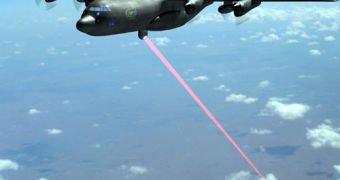All flying vehicles share a common problem – fuel. Their flight duration ability is severely limited by the amount of fuel they can carry, which forces designers to resort to annoying compromises in order to develop craft models with reduced consumption that have enough room for giant fuel reservoirs. But this increases costs and decreases performances. A professor from Cleveland believes the solution lies in a laser refueling system.
Dealing with the aircraft fuel supply has been a problem for aircraft designers since the dawn of human flight. Recent ideas of dealing with it have included refueling during flight, which implies that another aircraft, carrying fresh supplies of fuel, transfers it via a flexible hose after connection, in a complicated and dangerous process. But a team from Cleveland State University, led by associate professor Taysir Nayfeh, has come up with a better approach, involving powerful lasers and onboard batteries.
They suggested that aircraft should be provided with special panels, able to transform about 60% of the incoming near-infrared laser light into energy. This way, a sole high-power ground-based laser generator could help refuel a large number of aircraft up in the air for an indefinite amount of time. In this stage of the research, the novel technology and equipment are best suited for small devices, such as light, unmanned surveillance aerial vehicles.
But improving the technology, both that involving lasers and that concerning the aircraft's batteries, could reap important rewards, such as refueling large airplanes and keeping them flying for greatly extended periods. The idea of applying this technique to keeping spacecraft aloft has crossed the researchers' minds as well, but there are obvious obstacles to be dealt with first, like reaching the spacecraft, atmospheric issues and dissipating the heat the refueling process would produce, in no-atmosphere conditions.

 14 DAY TRIAL //
14 DAY TRIAL //